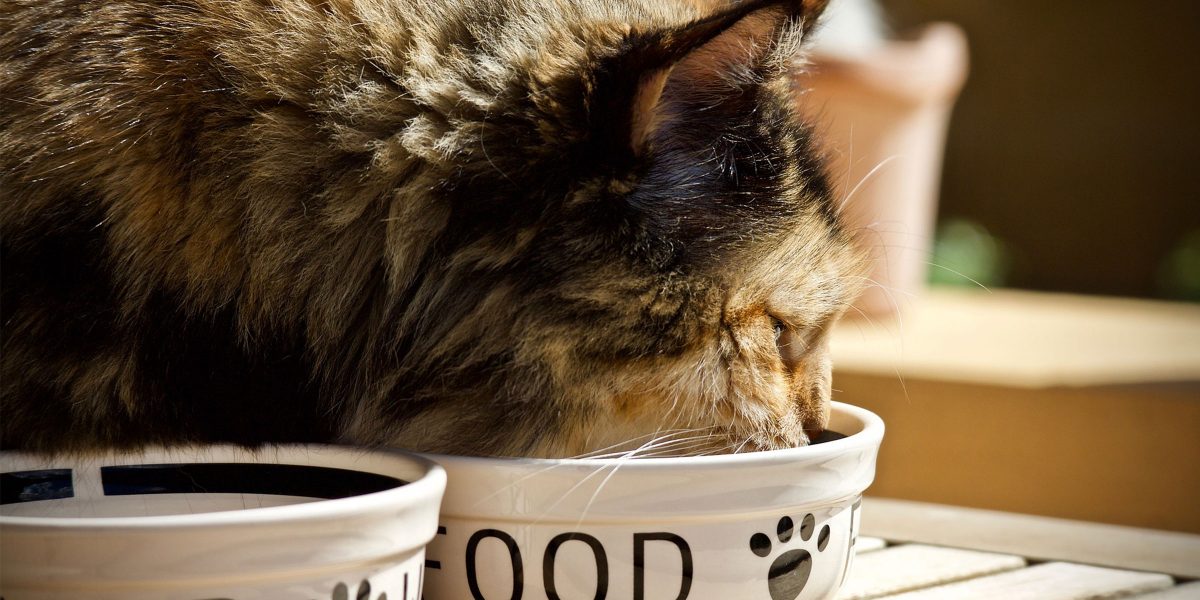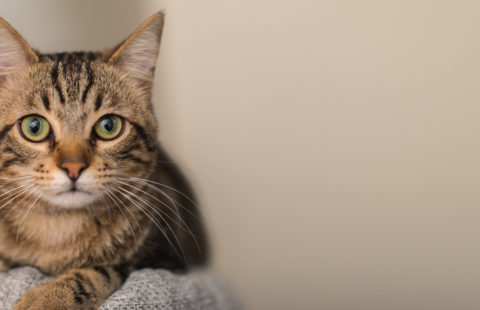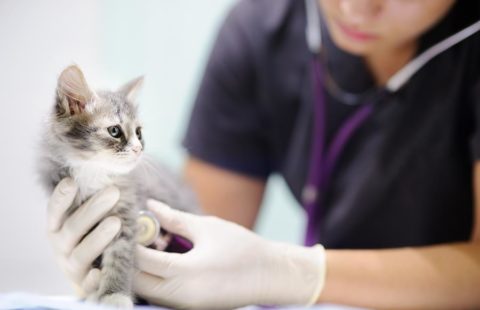Séverine Ligout, PhD
Dr. Ligout earned a pre-doctorate diploma in Neurosciences, Behaviour, and Cognition from the University Paul Sabatier, Toulouse (France) and a PhD in Animal Behaviour from the University François Rabelais, Tours (France). Prior to joining Nestlé Purina, she held several post-doctoral positions in France [National Institute for Agricultural Research (INRA), National Center for Scientific Research (CNRS), University of Saint-Étienne] and in the UK (University of Lincoln). These positions allowed her to gain further expertise in the areas of social preferences, animal cognition, welfare, acoustic communication, and human-animal bond. Dr. Ligout is a Research Scientist in Behaviour & Welfare research at Nestlé Purina. Since joining Nestlé Purina in 2011, her work has focused on understanding the feeding behaviour of cats and dogs. Her research activities have mainly focused on better elucidating how pets express their food enjoyment and how feeding behaviours can be impacted by specific product characteristics.
Tell us a little more about yourself
I grew up in a small village in the French countryside where I could enjoy living close to nature and animals. It turned me into an animal lover who became an ethologist by training because I’ve always been passionate about trying to understand things. I am now a pet behaviour researcher at PURINA where, to my delight, my day to day work focuses on better understanding pets’ feeding behaviours. I love both cats and dogs, but must admit I am more of a cat person as I have a greater affinity with cats’ temperaments and personalities.
What was your inspiration for the study?
Well, we knew that pet weight maintenance had become a real issue for many years now with increasing occurrences of overweight or even obese pets, and it is still a growing concern. Even if cats are usually thought to self-regulate their food intake, this is not always the case: several aspects of our modern lives put them at risk of being overweight, just like us!
A lot of studies had already investigated the efficiency of various cat weight management programs on cats’ weight and many of them spotted that owners could often struggle or not even comply with the recommended dietary restrictions. We found it striking that knowledge on how those programs could impact the natural feeding behaviours of the cats was lacking despite the fact it could help better understand why owners (and cats as well!) might be struggling.
What was the aim of the study?
Limiting caloric intake is the basis of the standard approach to prevent obesity. The aim of the study was thus to investigate how cats’ feeding behaviours change when they are switched from ad libitum (free access) to such restricted feeding.
How did you conduct your study?
We set up two groups of cats (31 in a control group and 38 in the test group) who received the same foods during the study but with different feeding regimen. Following an initial period of ad libitum feeding, the test group was fed on a mild caloric restriction regimen set up by our veterinarian for 9 months, followed by a return to ad libitum feeding. The control cats were fed ad libitum throughout the study. Cats in both groups received wet food in the morning as their first food serving, and dry food for the remaining daily feedings using an electronic feeder that measured their intake. When under caloric restriction, cats in the test group were allowed access to the feeder until they had consumed their permitted ration; once they had consumed 100% of their daily caloric allotment, the feeder did not allow them access to additional food.
Each cat’s feeding behaviours were monitored using the electronic feeding system daily and video observation before the start, 9 months after the start of caloric restriction, and one month after resumption of ad libitum feeding. Video observation assessed social behaviours between cats around the start of the first meal for cat-cat interactions such as conflict or avoidance.
What were your main findings?
We could identify dramatic changes in cat’s feeding patterns when under caloric restriction.
While the control cats’ feeding behaviour remained unchanged throughout the trial, the study cats ate fewer but larger meals, came back faster to the food bowl after each meal, and ate their meals faster on the caloric restriction regimen compared to ad libitum feeding. However, one month after returning to ad libitum feeding, the study cats’ eating behaviours had returned to their baseline levels, showing that cats were able to readjust their feeding behaviours back to normal.
In addition, cat-cat conflict increased during meal anticipation when on the caloric restriction regimen but returned to normal with resumption of ad libitum feeding. Such conflicts consisted of avoidance of each other, one cat displacing another from a location by staring or approaching, lifting a paw in a threatening manner, (ie, as if to swat the other cat with its paw) and some cats actually made contact with another when swatting with their paws. Thus, it looked like cats, just like us, are no strangers to the “hangry” (hungry + angry) feeling of hunger-driven irritability! Although no physical harm occurred during the study period, these interactions have the potential to impact negatively on the cats’ mental wellbeing and therefore welfare during the caloric restriction period, at least at actual feeding times. These cats were housed in an enriched manner that allowed them to distance themselves from one another using space and physical structures, allowing them to avoid further conflict. In addition, their welfare was continually monitored throughout the study by veterinary professionals.
You reported that in the few minutes before the first meal of the day there was an increase in tensions between the cats when their food was restricted – why might this be?
We indeed saw an increase in conflicts between cats just before the first meal of the day. It is likely linked to the higher food motivation/hunger of cats when calorie restricted: they have less calories to consume and they consume it faster, leading to a longer period without food between the last meal of a day and the first meal of the next day. This higher food motivation surely creates tensions when several cats approach the food bowls for the first serving of the day, leading to an increased likelihood of negative cat-cat interactions. This type of aggressive behaviour has been named “irritability aggression” in other scientific studies (Moesta and Crowell-Davis 2011, Beaver 2004). For humans, such hunger-driven irritability is often termed “hangry” in current slang (a combination of hungry and angry).
Was there anything that surprised you?
We had initially set a specific calorie allowance for the entire day, but cats then impulsively consumed most of their calorie intake in the first morning wet food serving. What was surprising was that it was true even for cats who were not wet food lovers. This led to reduced access to dry food for the rest of the day and overnight which was of course a welfare concern for us. To account for this impulsivity and ensure cats had food in the morning and afternoon we adjusted the calorie allowance rule. This is probably a situation that pet owners face too if they don’t divide their dieting cat’s daily ration into multiple servings.
In addition, even if we expected to see some change in cats’ natural feeding patterns when on caloric restriction regimen, the size of the change surprised me. As an example, cats’ average meal consumption almost doubled when moving to caloric restriction. We should really empathise with cat owners as their cats’ behaviour on a diet changes in such dramatic ways that if they don’t have the right tools and tips they may just give up.
Study cats were used for your research; do you think there could be any additional or different behaviours in pet cats experiencing a similar restricted feeding situation in a home environment?
I would expect our study findings to also be seen in home.
Indeed, we were studying the impact of environmental change, in this case calorie restriction which in turn produces a physiological change, hunger, in the behaviour of cats and cats’ physiology would be expected to be the same between study and in-home cats.
On top of that, from cats’ perspective, calorie restriction not only results in less calories available for ingestion, but also, they no longer have control over some aspects of food availability and how much to eat. There is research with big cats in the wild that shows that when food is scarce, they also tend to take few but bigger meals (as in our study) opting to go after larger than smaller prey (Schaller, 1972).
In our study we only used a mild dietary restriction. Weight loss programs sometimes request much stronger restrictions, so the expected behavioural effects in-home would likely be larger too and that may explain why some owners can’t comply with weight management programs.
In addition to our findings, I would anticipate cat-owner interactions to be impacted to some extent by calorie restriction, but we did not have the opportunity to measure this in our study. Food begging behaviours for instance may likely increase especially near or at scheduled meal times. In a worst-case scenario, they could also happen at other times during the day and night. This may not come as a surprise to cat owners who already struggle with the consequences of a dieting cat in the household. It is also possible that cats might try to reach into closed food bags or food storage cupboards. We also do not know if the “irritability aggression” we saw in our study could to some degree be aimed at people, or towards other cats in the household outside of feeding times, or on the opposite side, be less likely to happen in a home environment.
Indeed, many factors may possibly mitigate the expected negative impacts of restricted feeding, such as the level of calorie restriction, cat’s personality, the usual quality of the cat-owner or cat-cat relationships and of course the possible feeding strategies implemented.
What would be your top tips from the results of your study and who would they be for?
My top tips would be mainly for cat owners who must limit their cat’s food intake.
They should leverage feeding strategies to help cats be less impulsive and maintain baseline feeding behaviour, by favouring multiple, smaller meals throughout the day such as for instance:
- Dividing the total ration into multiple small meals over the course of the day (manually or using automated feeders)
- Providing puzzle feeders that slow down eating while favouring activity and mental stimulation
- Changing food location for the cat to engage in searching
Those tips, of course, can also be used by veterinarians to best advise their clients and encourage owner compliance to weight management programs and subsequent cat welfare.
I think the above-mentioned feeding strategies should not be limited to weight management programs. They can encourage a natural cat feeding pattern and provide cats with mental stimulation and physical activity opportunities. So, all cats could benefit!
How might the findings of your study help when creating a plan for weight loss or preventing weight gain in pet cats?
The more cat owners know what to expect when calorie restricting their cat(s) the more prepared they will be, whether it is from a psychological or organisational standpoint. They will then be able to proactively, at least, limit the likelihood and consequences of having a hangry cat in the household.
Knowing how restricted feeding impacts natural cat feeding behaviour allows us to identify feeding strategies to put in place to help cats maintain multiple small meals throughout the day and prevent too fast eating during a weight management program. For instance, dividing the total ration into multiple small meals over the course of the day (manually, with automated feeders or using puzzle feeders) as well as engaging the cat to search for his food by changing its location could be valuable strategies. Feeding cats separately to prevent conflicts in multi-cat household could be helpful too. Of course, not everyone may be in the situation of being able or even wanting to implement all of these strategies. Depending on the situation (specific constraints, owners and cat’s profile), it should however be possible to select the best fitting feeding strategy to implement with the support of their veterinarian. This will, for sure, improve both cat (and owner!) welfare during weight management programs.
Where do you hope the results of this study take you next?
This is really what I love in science: each study, each discovery leads to new questions and new research.
I would be interested to investigate what possible effect calorie restriction has on cat-owner interactions and how much the recommended feeding strategies will indeed help safeguard cat-owner relationship, cats’ welfare and owners’ compliance to weight management programs.
Such data would be helpful to further promote the previously-mentioned feeding strategies but also encourage further work on nutritional strategies other than calorie restriction for cat weight management.
It’s clear your research tackles issues with the aim of improving the welfare of cats but do cats feature anywhere else in your life?
Cats have always been part of my life. My first cat, “Amitié”, was a stray cat. We found her in our backyard as a kitten when I was a child and she became our “family cat” for a bit more than 20 years. I was lucky to also share 16 years with “Samy”, a black stray cat I fostered when he was 6-months-old while I was at the University. Both cats lacked early age socialisation so they didn´t welcome approaches from strangers. However, with me, they were the friendliest of cats. They taught me and supported me a lot during those years. I would love to get a new cat but unfortunately my current lifestyle is not appropriate. I’d rather wait to be sure that I can provide a new cat with the best living conditions and welfare before welcoming another into my life.
What’s your favourite thing about iCatCare?
I love that iCatCare leverages scientific knowledge to actively communicate and promote cat welfare. Cat science is great, but without a voice to make it accessible to the general public, it loses part of its purpose.
Reference for the study
Ligout S, Si X, Vlaeminck H, Lyn S. Cats reorganise their feeding behaviours when moving from ad libitum to restricted feeding. Journal of Feline Medicine and Surgery. 2020 Mar 9:1098612X19900387.
It can be accessed here.
Additional References
Moesta A and Crowell-Davis S. Intercat aggression – general considerations, prevention and treatment. Tierarztl Prax Ausg K Kleintiere Heimtiere 2011; 39: 97–104.
Beaver BV. Fractious cats and feline aggression. J Feline Med Surg 2004; 6: 13–18.
Want to learn more?
To learn more about how best to feed your cat to avoid a “hangry” cat, read our article ‘Feeding cats creatively’.






